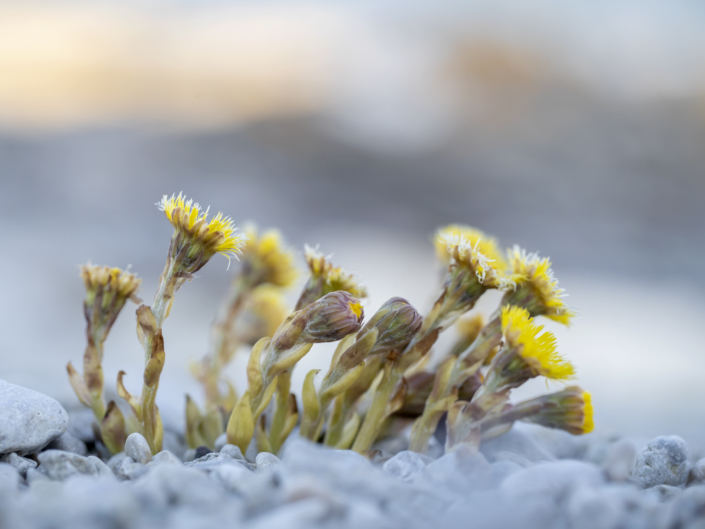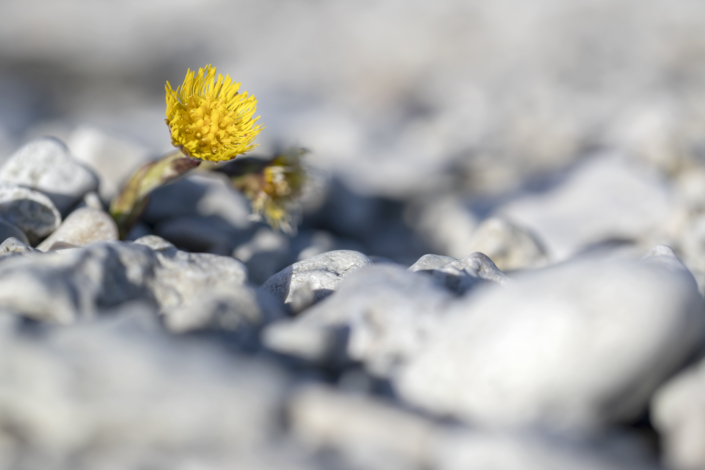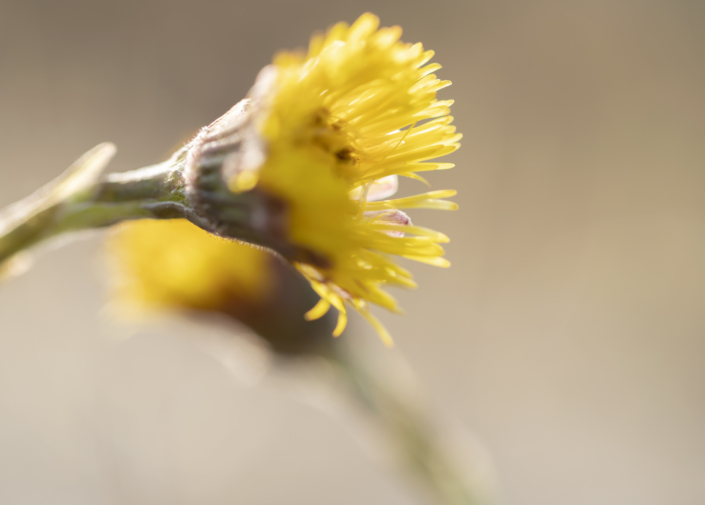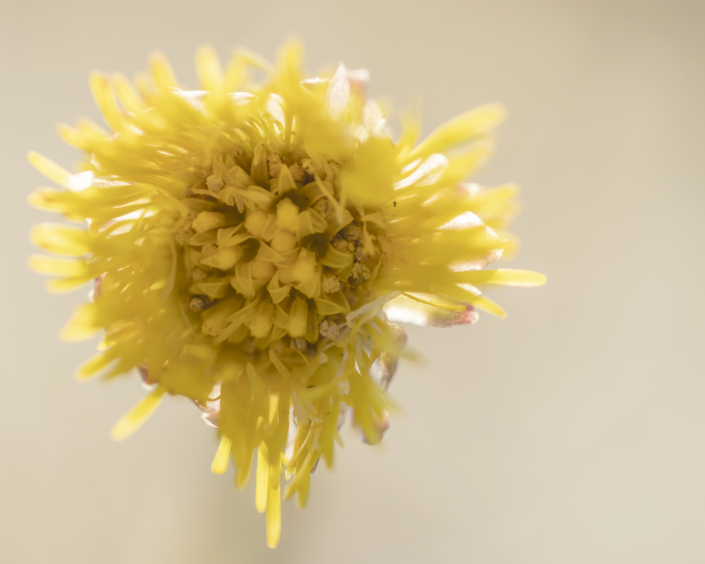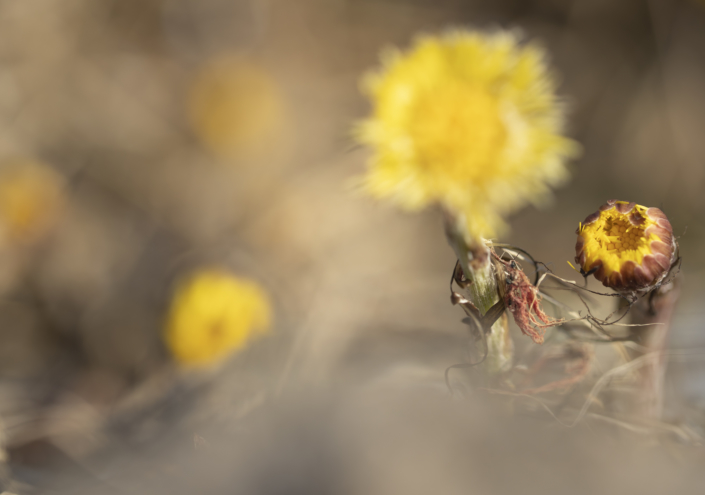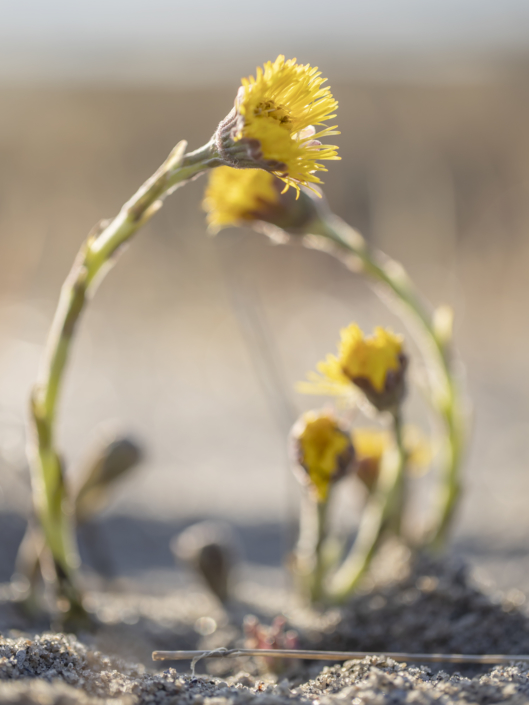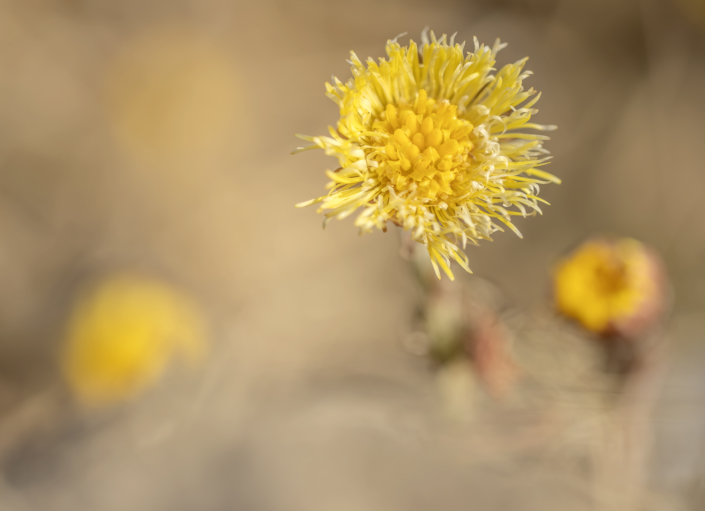This post is also available in: Swedish
Coltsfoot – Tussilago farfara
Coltsfoot – Tussilago farfara
commonly known as, is a plant in the groundsel tribe in the daisy family Asteraceae, native to Europe and parts of western and central Asia. The name “tussilago” is derived from the Latin tussis, meaning cough, and ago, meaning to cast or to act on. It has had uses in traditional medicine, but the discovery of toxic pyrrolizidine alkaloids in the plant has resulted in liver health concerns.
Coltsfoot is a perennial herbaceous plant that spreads by seeds and rhizomes. Tussilago is often found in colonies of dozens of plants. The flowers, which superficially resemble dandelions, bear scale-leaves on the long stems in early spring. The leaves of coltsfoot, which appear after the flowers have set seed, wither and die in the early summer. The flower heads are of yellow florets with an outer row of bracts. The plant is typically 10–30 cm (3.9–11.8 in) in height. The leaves have angular teeth on their margins.



